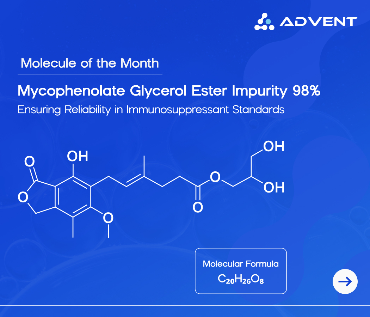What are conjugated bile salts?
Conjugated bile salts, because of their physiologically important acid-base properties, are used as ingredients in microbiological culture media for dissolution testing of drugs (including in vitro and in vivo Bioequivalence studies) and other biological applications. Advent has been successful in synthesizing the following six conjugated bile salts on the kg scale.
Some facts about conjugated bile salts are as follows;
Origin
Primary Bile acids such as Cholic acid and Chenodeoxycholic acid, which make up to 80% of all bile acids in the human body, are synthesized in the hepatocytes. Before being secreted into the biliary tract, they are conjugated (up to 98%) with glycine or taurine (end products of cysteine metabolism) to form glycoconjugates or tauroconjugates, called Conjugated Bile Acids/Salts.
Approximately 75% of cholic acid and chenodeoxycholic acid are conjugated with glycine, to form glycocholic acid and glycochenodeoxycholic acid respectively and the remaining 25% with taurine, to form taurocholic acid and taurochenodeoxycholic acid respectively. The chemical structure of the most abundant bile acids is given below
Hydrophilicity
Conjugated bile acids having both polar and non-polar groups are amphiphilic molecules and are more hydrophilic than non-conjugated bile acids such as Cholic acid & Chenodeoxycholic acid. Therefore, they are more effective surfactants & have enhanced emulsification capacity. In fact, conjugation decreases the pKa of conjugated bile acids, from about six, a value typical of non-conjugated molecules, to about four for glycocholic acid, and to about two for taurocholic acid.
This indicates that conjugated bile acids are ionized in a broader range of pH to form the corresponding salts. The hydrophilicity of the common bile acid and conjugated bile acid/salts decreases in the following order:
Glycine-conjugated < Taurine-conjugated < Lithocholic acid < Deoxycholic acid < Chenodeoxycholic acid < Cholic acid <Ursodeoxycholic acid.
Conjugation also decreases the cytotoxicity of primary bile acids.
Application in drug formulation and delivery
Bile salts, being endogenous surfactants, have been employed widely as absorption enhancers to increase drug transport across various biological barriers such as the blood-brain barrier, skin, mucosa, cornea, buccal, nasal, pulmonary and intestinal membranes. They act as absorption enhancers by increasing the solubility of hydrophobic drugs or by increasing the fluidity of the apical and basolateral membranes and promoting the chemical and enzymatic stability of drugs.
Recently, bile acids have drawn much attention in the field of drug delivery due to their ability to act as a drug carrier system in the form of mixed micelles, bilosomes and chemical conjugates with drug molecules.




